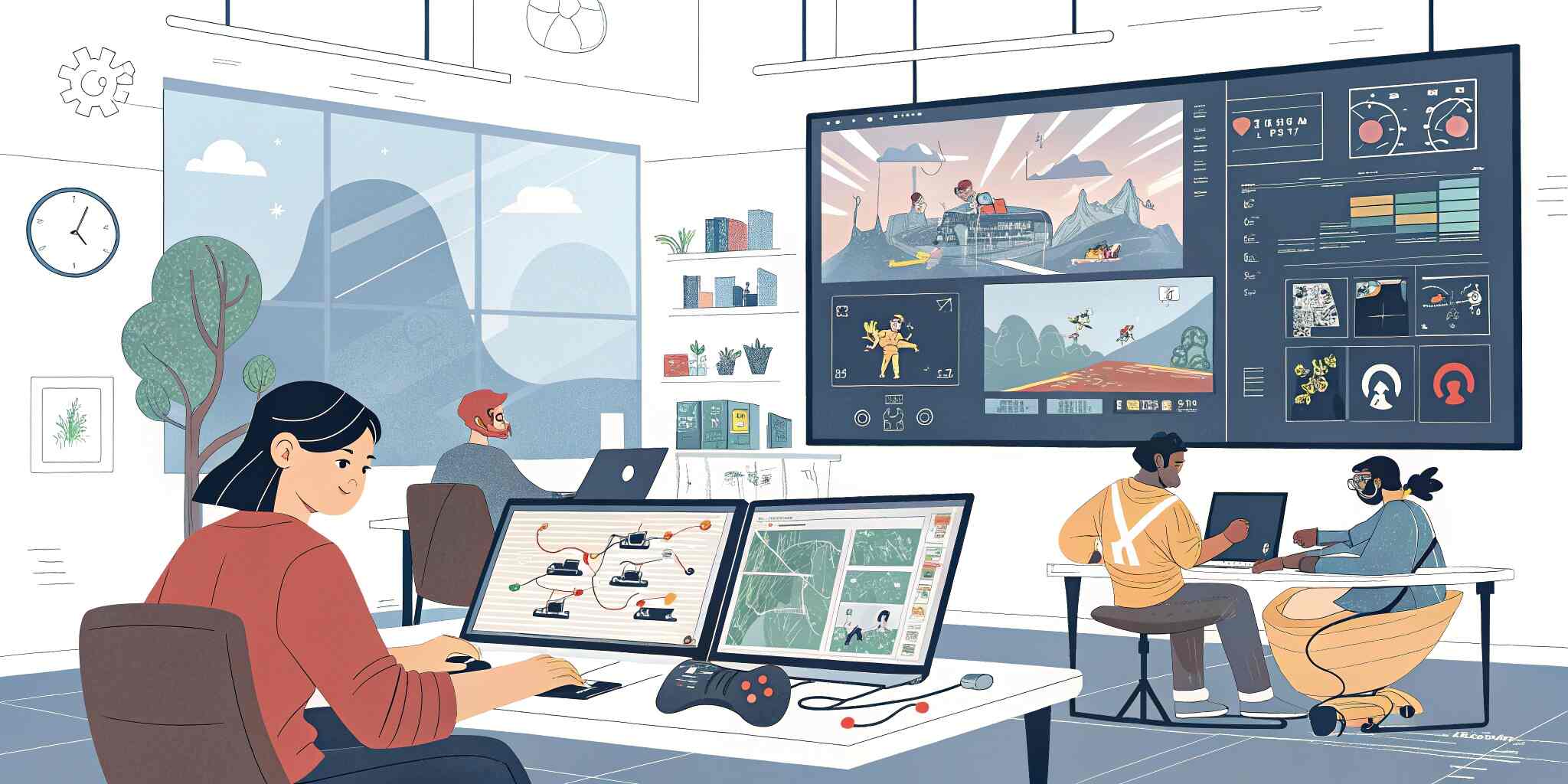Creating a successful game isn’t just about stunning graphics or compelling stories—it’s about player engagement. One of the most powerful tools in a game designer’s arsenal is the game loop. A well-crafted loop keeps players engaged, entertained, and coming back for more.
What is a Game Loop?
A game loop is a repeating cycle of gameplay that provides ongoing motivation for the player. It typically includes an action, feedback, and reward system. Great loops are addictive because they appeal to psychological triggers like progress, challenge, and reward.
Types of Game Loops
1. Core Loop The central gameplay mechanic that players repeat most frequently.
Example: In a platformer, jump-dodge-collect.
Goal: Deliver fast-paced engagement and instant gratification.
2. Mid-Term Loop Engages players over a longer play session.
Example: Completing missions to unlock new areas or tools.
Goal: Maintain session-level interest and create progression.
3. Long-Term LoopKeeps players returning over days or weeks.
Example: Leveling up characters, daily quests, or events.
Goal: Build long-term retention and loyalty.
Key Elements of an Addictive Game Loop
1. Action and Feedback Ensure that every player action leads to an immediate and meaningful response. This reinforces the behavior and encourages repetition.
2. Rewards and Progression Give players a sense of achievement through points, items, levels, or visual indicators. The brain releases dopamine upon receiving rewards, reinforcing the loop.
3. Challenge and Skill Growth Balance difficulty to match the player’s skill level. Mastery drives long-term engagement.
4. Time Constraints and Scarcity Daily limits or rare items can heighten the sense of urgency and importance.
5. Social and Competitive Elements Leaderboards, co-op modes, and PvP options enhance engagement through community and competition.
Tips for Designing Effective Game Loops Map out your loops visually to identify weaknesses.
Playtest frequently and iterate based on user feedback.
Make sure each loop supports the others for cohesive gameplay.
Use data analytics to measure loop performance and optimize retention.
Examples of Great Game Loops Candy Crush: Match-3 (core), complete level sets (mid), leaderboard and timed events (long).
Fortnite: Combat and building (core), XP missions (mid), seasonal battle passes (long).
Stardew Valley: Farming and gathering (core), town development (mid), narrative and upgrades (long).
Conclusion:
Designing addictive game loops is both an art and a science. By understanding player psychology and strategically layering core, mid, and long-term loops, you can craft gameplay experiences that are both engaging and memorable.


